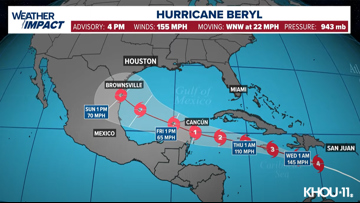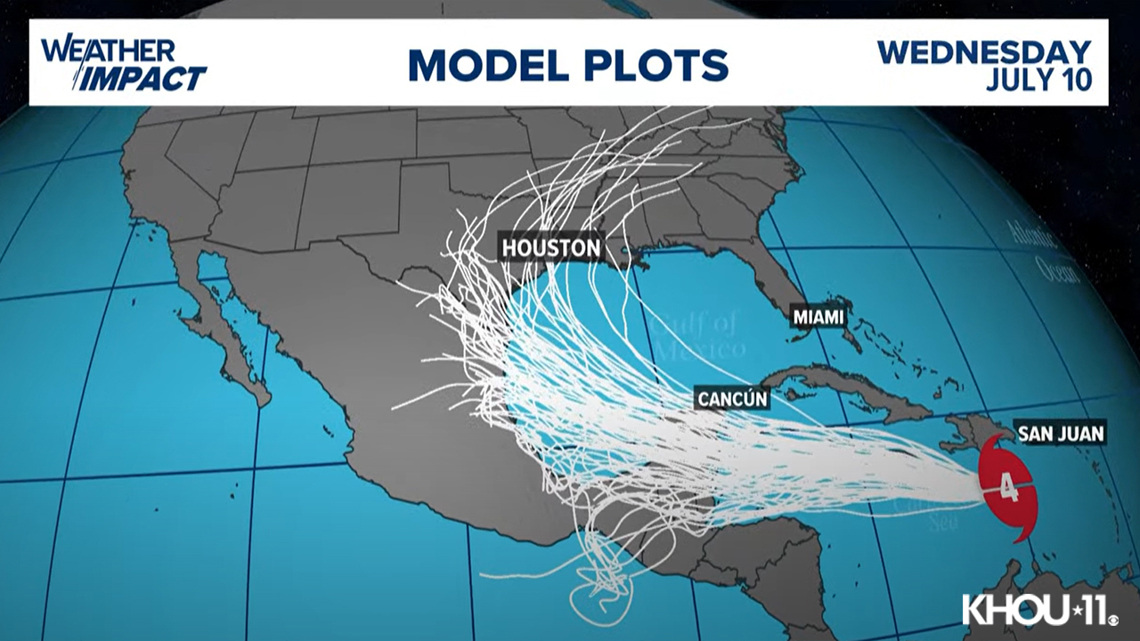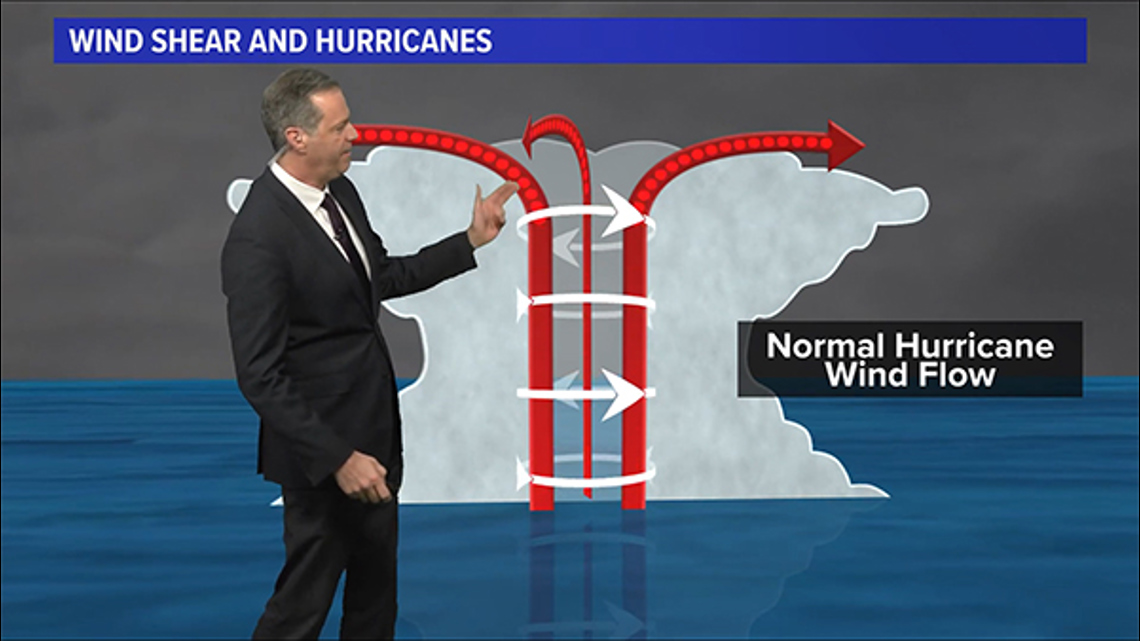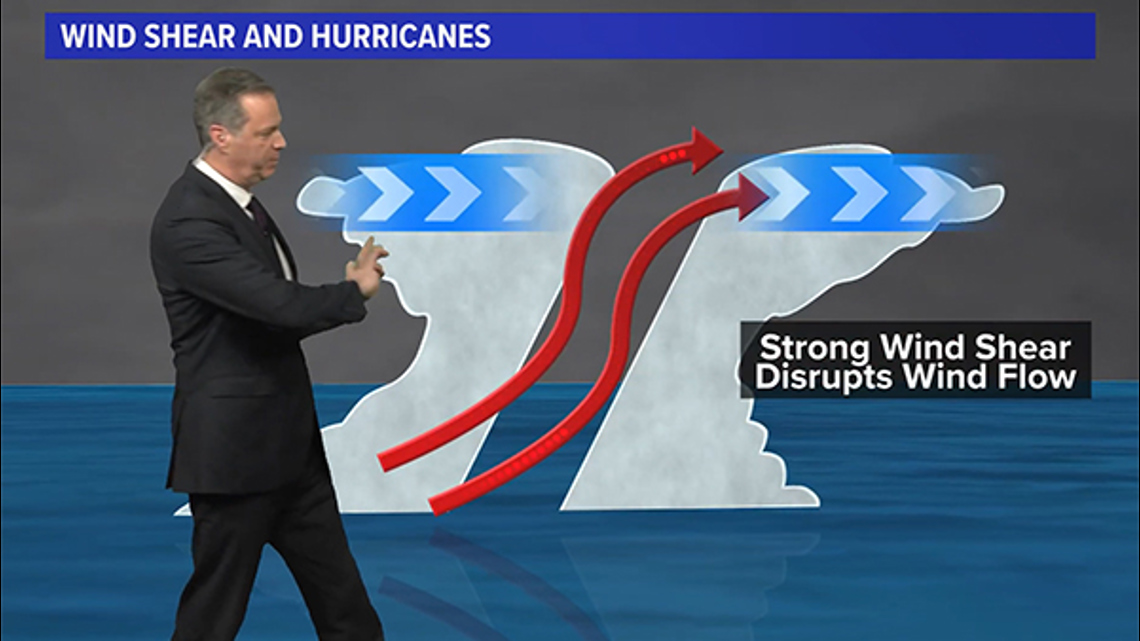- National memorial to honor NC firefighter who died on duty during Hurricane Helene
- Gov. Josh Stein extends State of Emergency for western NC wildfires
- Governor Stein extends state of emergency for NC wildfire threat
- Governor Stein extends emergency in 34 NC counties amid wildfire threat
- Texans can buy emergency preparation supplies tax-free April 26-28 ahead of severe weather season
4 P.M. BERYL UPDATE: Hurricane remains a Cat. 4 storm, winds at 155 mph | See latest track

The storm was taking aim at Jamaica on Tuesday. The AP is reporting that at least six people have been killed in the storm.
HOUSTON — Hurricane Beryl roared through open waters Tuesday as a powerful Category 4 storm heading toward Jamaica after earlier making landfall in the southeast Caribbean, killing at least six people.
A hurricane warning was in effect for Jamaica, Grand Cayman, Little Cayman, Cayman Brac and for Haiti’s entire southern coast. Beryl was forecast to start losing intensity on Tuesday but still be near major hurricane strength when it passes near or over Jamaica early Wednesday, near the Cayman Islands on Thursday and into Mexico’s Yucatan Peninsula on Friday, according to the National Hurricane Center.
Late Monday, Beryl became the earliest storm to develop into a Category 5 hurricane in the Atlantic, fueled by record warm waters, though it was downgraded a notch Tuesday to Category 4.
The center said Beryl was expected to bring life-threatening winds and storm surge to Jamaica, where officials warned residents in flood-prone areas to prepare for evacuation.
The forecast track from the Hurricane Center takes the storm into the Yucatan, then back into the Gulf of Mexico as a much-weakened tropical storm. If this forecast verifies, Houston/Galveston would see minimal impacts — increased chance for scattered showers, minor coastal flooding, beach erosion and rip currents, much like what Alberto did in June.
The storm is still a long way out and forecasts can change. Watch the weather multiple times a day this week so no one gets caught off guard if things change with this well-organized storm. There’s a lot of uncertainly with the forecast as Beryl enters the Gulf so Texans should keep a close eye on updates throughout the week
CURRENT LOCATION/PATH: With the 4 p.m. Tuesday update, Beryl was a Category 4 storm with maximum sustained winds of 155 mph, moving west-northwest at 22 mph. (Update in Spanish).
Hurricane Beryl forecast cone

Hurricane Beryl spaghetti models


“The eye has shrunk in diameter as it’s gone over the past six hours,” said KHOU 11 Chief Meteorologist David Pau Monday during his 10 p.m. forecast. “Six hours ago, the diameter was 20 miles. Now that diameter is 15 miles. The shrinking of the eye, think of these storms as an ice skater, spinning and then when they pull their arms in, that’s the eye getting smaller, that diameter gets smaller. It’s the conservation of angular momentum and the eye gets tighter, the storm spins faster.
RELATED: KHOU 11 Chief Meteorologist David Paul on what Texans should be watching with Hurricane Beryl
As for why it’s getting stronger, Paul said there’s nothing yet stopping it from doing so.
“It’s completely un-sheared,” he said. “It’s standing up straight and down. There’s no vertical shear to tilt it over and disrupt the circulation. We’ve got plenty of warm water and so you have a storm that is just in a perfect spot to develop into a Cat. 5.”


Paul said wind shear and mild and upper level winds blowing across the storm will tilt it and that’s what’s expected to happen going forward.


You can see Chief Meteorologist David Paul’s 10 p.m. Monday forecast here.
Hurricane Season links
Track the storm
Hurricane season 2024 forecast
Colorado State University released its forecast update for the 2024 hurricane season, maintaining that it will be a busy one. In April, they predicted that we could see 23 named storms and 11 hurricanes with five becoming major hurricanes. They blame the extremely warm tropical Atlantic and likely “La Niña” as the primary reasons.
RELATED: Colorado State University releases hurricane season forecast update, maintains it will be a busy one
On average, the Atlantic sees about 14 named storms each hurricane season. Of those, seven become hurricanes with three becoming major (Category 3 or above) storms.
Why such an active season? Dr. Phil Klotzbach, lead forecaster at CSU, says it’s because of two main factors — above-normal sea surface temperatures and expected La Niña conditions this summer. The warm water adds more energy to the tropics, making fuel for these storms more available. But perhaps more importantly, La Niña usually reduces vertical wind shear.
Winds blowing across a developing or mature tropical system can keep a budding system from developing and weaken stronger storms. This reduces the total storm count. But when La Niña conditions are in place, this wind shear is often reduced. That, combined with the warm ocean surface temps is why Dr. Klotzbach believes more storms than normal will form.